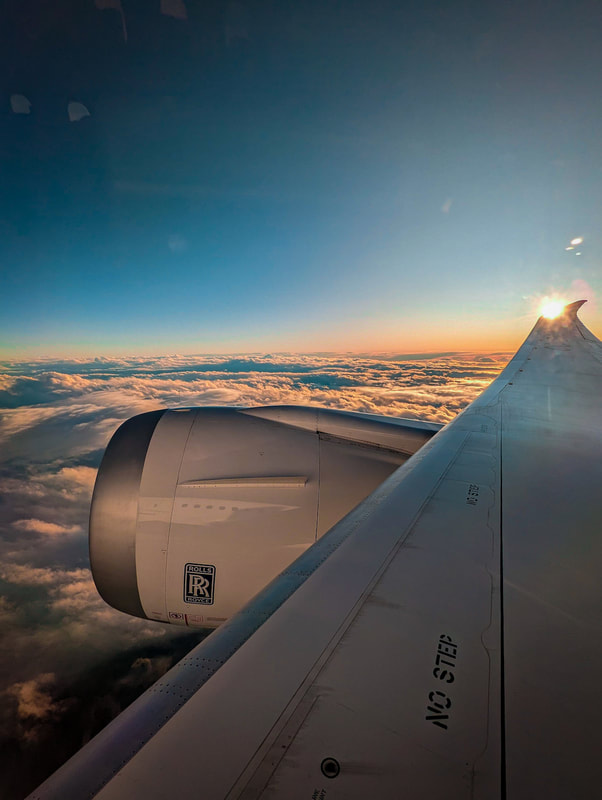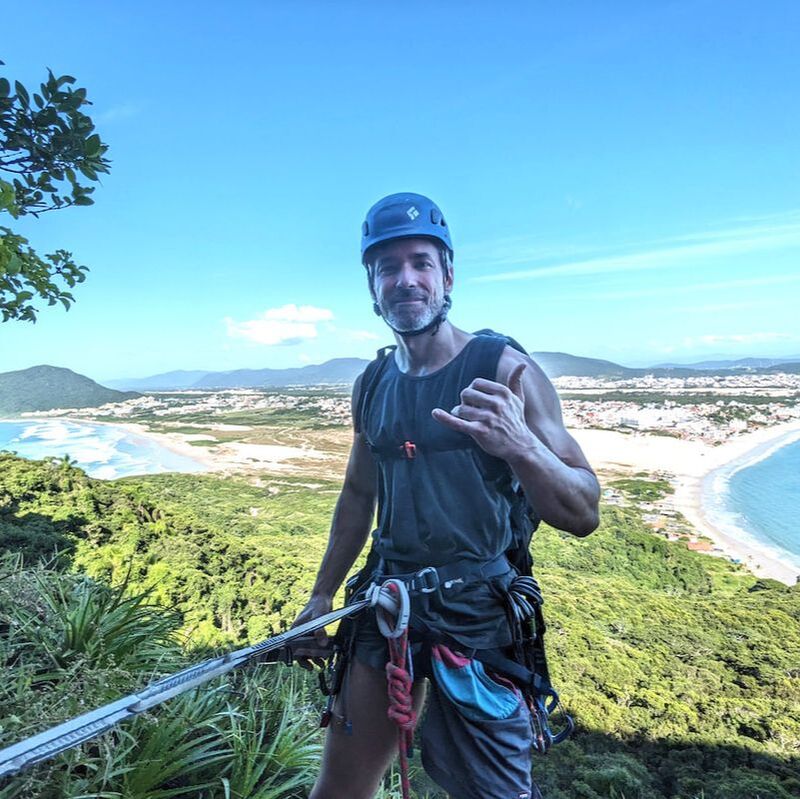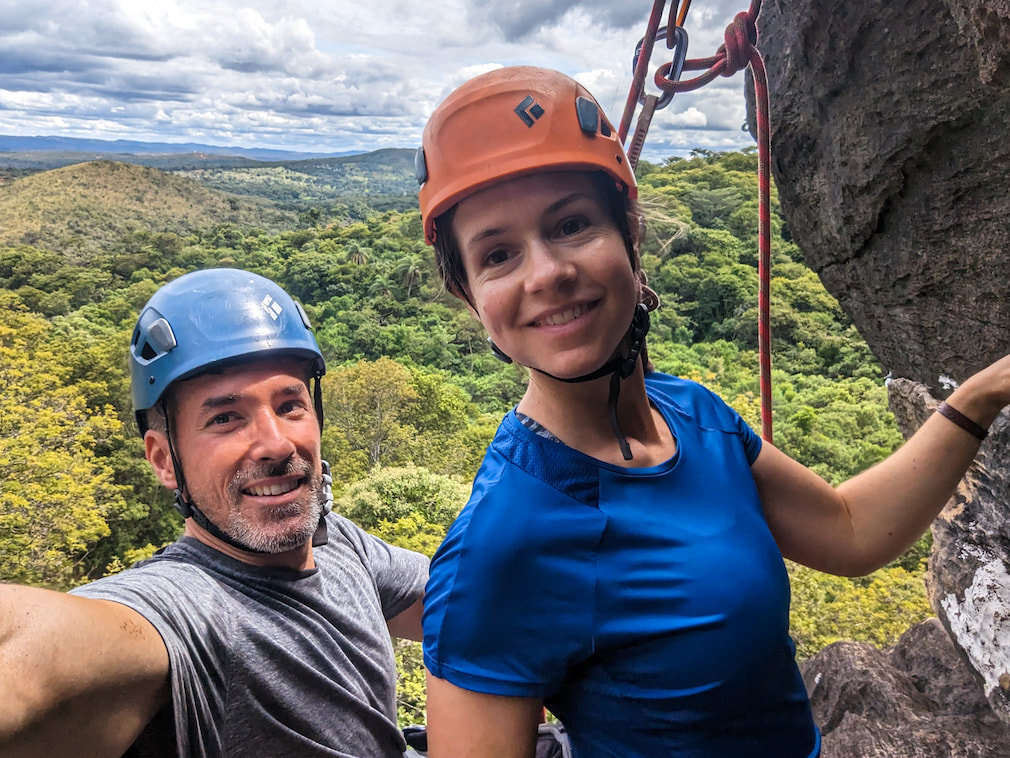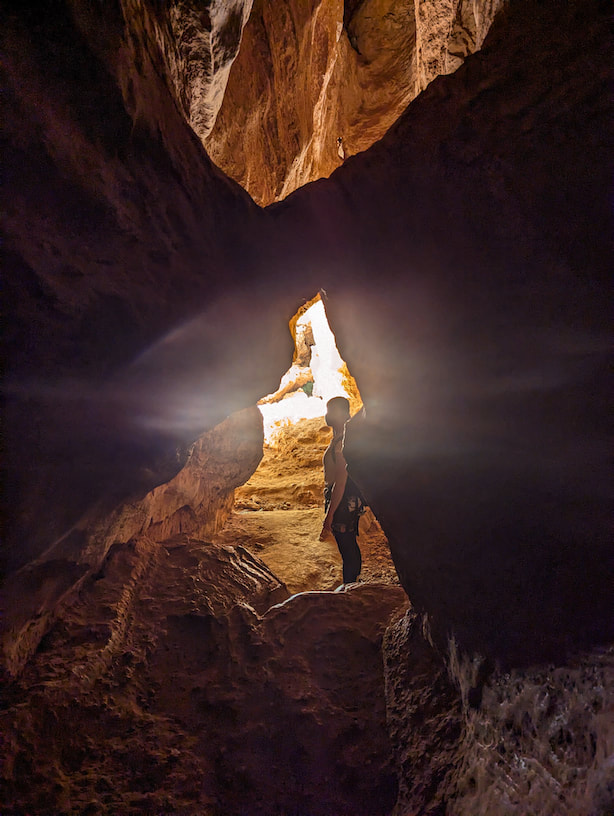After Covid, life changed a lot. Things got more expensive, travelling got harder. My partner, Marion and I were almost eight years without visiting my family and friends in Brazil, and because of work, travelling was always limited to visiting family, and not much else. That's when we decided to take a break - a long one. We started the mission of disposing of everything we had accumulated along the years and, with a one-way ticket - 4 bags and 2 backpacks - we began and headed straight for Brazil.
|
|
|
Brazil is a big country, with enormous cultural diversity, making it really hard to say you actually know it, even for a Brazilian. The land of the Amazon rain forest, Rio de Janeiro, samba, soccer, and beautiful people - it’s a colourful place. It also has a climbing community that’s been growing fast thanks to names like Felipe Camargo [the first Brazilian climber to reach the 9b FR (5.15b US/37 AU) grade], and Cesar Grosso, famous for his ascent of the Pedra do Bau roof route. Rock climbing is not a poor person’s sport to practice, especially in Brazil, where a rope or a climbing shoe can cost over a month’s wages. It’s probably the reason I didn’t start climbing in Brazil. This trip would actually be my first opportunity to climb in Brazil and we began in Florianopolis, the city where I grew up.
Florianopolis is a small Island in the south of Brazil, and it’s famous for beautiful beaches, great weather, a funny accent, and a good quality of life. We spent some time with the family and friends and began exploring what Florianopolis had to offer for climbing. One of the most popular crags of this location is, Morro da Cruz, Located on a hilltop in the heart of the city centre, with probably the best view to the “Beira Mar” (seaside/coastline). It has great technical climbing on granite (a bit slabby) that offers hundreds of routes. We made some friends while climbing there, like Saulo and Ricardo, and their wives, who helped us with tips about other local climbing areas and over greater Brazil. |
We also visited Pedreira do Abraao, which is an old quarry that was later transformed into a climbing crag. It’s been through some problems in the old days, where climbing in the area was dangerous, due to the favelas (aka. Brazilian slum) located nearby. For that reason, it stayed abandoned for a few years, until the mayor decided to use the area as a Civil Police Station. The authorities agreed to let climbers access the area, as long as they had permission.
The last crag we had the pleasure to visit in Florianopolis was, Ponta dos Ingleses (Ingleses Beach Point) located in the far Northeast of the island. Here I had the pleasure to take my dad for a climbing experience (on a multi-pitch), which he absolutely loved! From the top of this hill, you have the amazing view of two of the best beaches in Florianopolis, Ingleses and Santinho’s.
|
|
It came time to part from the family, and head to our first adventure. Probably the most famous climbing place in Brazil, Serra do Cipo, where we stayed for ten days. This was my first visit and the thrill of experiencing such an iconic spot for climbing was huge. The food experience was sensational, and now we know why Minas Gerais culinary is so famous in Brazil and around the world! If you’ve ever heard or tasted the Pao de Queijo (cheese bread), this is where it comes from!
ABOVE: Serra do Cipo, Brazil - Click on photo to enlarge and see caption
Climbing on limestone was such a pleasing experience after only knowing the Australian sandstone. My favourite climb was Cheetara, a 8a BR (5.12a US/24 AU), considered by the locals a hard one. It possesses powerful moves and it’s one of the most classic routes, along with Lamurias de um Viciado (7c BR/5.11d US / 23 AU), Sinos de Aldebaran (8c BR/5.12c US/26 AU), and Marion’s favourite, Amor Incondicional (7b BR (5.11b US / 21 AU).
Cheetara was my favourite route because many friends suggested it. It’s also around my grade limit for a quick project. I wasn’t able to onsight the climb - I gave it three shots on the first day - then we had to stop because of a surprise thunderstorm. Apparently this is very common in the area.
Cheetara was my favourite route because many friends suggested it. It’s also around my grade limit for a quick project. I wasn’t able to onsight the climb - I gave it three shots on the first day - then we had to stop because of a surprise thunderstorm. Apparently this is very common in the area.
ABOVE: Serra do Cipo, Minas Gerais, Brazil - Click on photo to enlarge and see caption
|
|
|
|
|
|
|
|
After a good shower on the trail back to the Inn, we found a scorpion by the headboard of the bed (probably because of the rain), which we luckily noticed before going to sleep. We went back to Cheetara the next day, and I got the send on my first attempt. I was pretty stoked!
Ten Days of climbing at Serra do Cipo passed in a flash. It was way too short, with so much more to explore - not only for climbing, but also walks, waterfalls, food, culture, and the people… We definitely plan to return, but there was more to explore in the fine world of climbing! Many thank-you's to Rodolfo and Cynthia for the tips about which routes we should try, and to Magrao (Ricardo) and Tai for a place to stay. Next Stop, Europe. To Be Continued… |



















